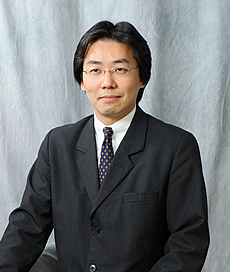Welcome
I was appointed as Professor of Department of Immunology and Cell Biology, Osaka University Graduate School of Medicine on April 1st, 2013.

Our laboratory originated from Department of Tumor Metabolism, the Institute for Cancer Research. The first professor was Keishi Matsumoto and the second professor was Yukihiko Kitamura. Afterward, it went through transition from Department of Pathology, Biomedical Education and Research Center to Laboratory of Developmental Immunology, Graduate School of Medicine/Frontier Biosciences (third professor Toshio Hirano), and has settled to the present form. During the process, the main subject of this laboratory has changed from pathology/oncology to immunology depending on the research trend of the times or specialty of the head. However, this laboratory has been consistently focusing on “human diseases” and exploring major questions in the field of medicine and bioscience. I feel greatly honored and motivated to succeed such a historic and long-established laboratory.
After graduating from Osaka University Faculty of Medicine, I joined former Third Department of Internal Medicine (Prof. Tadamitsu Kishimoto ) and started clinical and research career mainly in the field of autoimmune disorders such as rheumatoid arthritis. Subsequently, I was involved in basic research regarding regulation mechanism of cell signaling transduction and acquired basic imaging technique for analyzing living cells physiologically in the Department of Pharmacology (Prof. Yoshihisa Kurachi), where I had researched in undergraduate days. After receiving a PhD in 2005, I returned to the field of internal medicine and sought interdisciplinary research between immunology and imaging technology to launch my original research field. While I was working in National Hospital Organization Osaka Minami Medical Center (manager Yukihiko Saeki) where ample research facilities (Department of Clinical Research) were available, I freely conducted my research during my clinical work as a rheumatologist. I appreciate the opportunity to conduct my research with full discretion during the young time immediately after obtaining a doctorate (31 years old at that time).
Rheumatoid arthritis is one of the refractory autoimmune diseases that causes bone destruction and deformation in the inflamed joints. The "criminal" that damages the affected bone is osteoclasts, the specialized cells derived from monocyte/macrophage lineage. As there are a number of osteoclasts in the inflamed joints, I was interested in the mechanism how they migrate to inflamed joints. I screened a variety of substances that have the ability to move cells. Consequently, I identified a molecule (sphingosine-1-phosphate) as a powerful chemoattractive factor involved in the migration of osteoclasts. Nevertheless, it was not possible to obtain direct evidence whether this molecule has really attracted the osteoclasts in vivo or not.
In the face of difficulty, I focused on in vivo imaging technique that had just begun to be applied to immunology research at that time. I studied abroad in Dr. Ronald Germain’s laboratory at National Institutes of Health (NIH) in the United States, where they had already succeeded in dynamic imaging of antigen presenting cells in lymph nodes of the experimental animals using two-photon excitation microscopy. While learning this research method, I was challenging in vivo live imaging of bone marrow to visualize the movement of osteoclasts. Although I had much difficulty in visualizing living bone marrow cavity surrounded by hard calcareous bone tissue, I finally succeeded to establish the methodology for visualizing cells in bone marrow alive without damaging the bone by overcoming various obstacles. Furthermore, by using this technique, I clarified the dynamic controlling mechanism of osteoclast by sphingosine-1-phosphate in the bone tissue. I felt a great pleasure to be able to elucidate my own new concept using a new methodology I have developed by myself.
I started my new career as Specially Appointed Associate Professor in 2009 (Professor from 2011) in Immunology Frontier Research Center (iFReC), a start-up research center in Osaka University. I had the opportunity to have an independent laboratory for the purpose of immunological research using in vivo imaging technique. I could interact with a number of researchers beyond the field of immunology, and performed in vivo imaging of various organs other than bone marrow, which has extended my research theme to the adaptive immune system, chronic inflammation, the invasion and metastasis of cancer as well as bone destruction. Our recent achievements are highly attributable to the relationship and research collaborations with many researchers from a variety of fields. I deeply feel that good results cannot be achieved alone.
I was appointed as Professor of Graduate School of Medicine/Frontier Biosciences. I wish to extend the field of imaging study that still has a possibility for further development and to clarify the dynamic nature of the "society of the immune cells" as my lifework. In addition, I would like to focus on 1) immunology research with an emphasis on medicine or treatment, and 2) education of the successors for developing clear sense of medicine and biology through the immunology research (please refer to the research content for details).
Immunity and inflammation play a major role in pathophysiology of not only autoimmune disorders and infectious diseases, but also almost all disorders such as cardiovascular diseases, lifestyle-related diseases, cancer and traumatic diseases. I would like to perform immunology research with a wide point of view, understand diseases through immunology, and contribute to the development of novel therapeutic medicine. In addition, through the research of immunology, I wish to build research cooperation with various areas in life and medical sciences, and create "multi-organ, multi-field association for connecting people through immunology". Thank you very much in advance for your continued patronage.
Masaru Ishii




